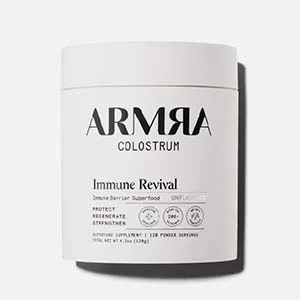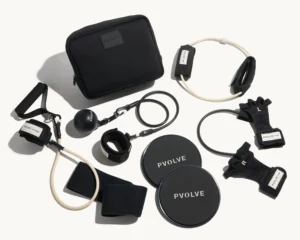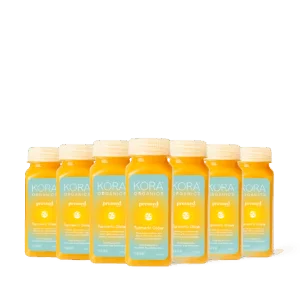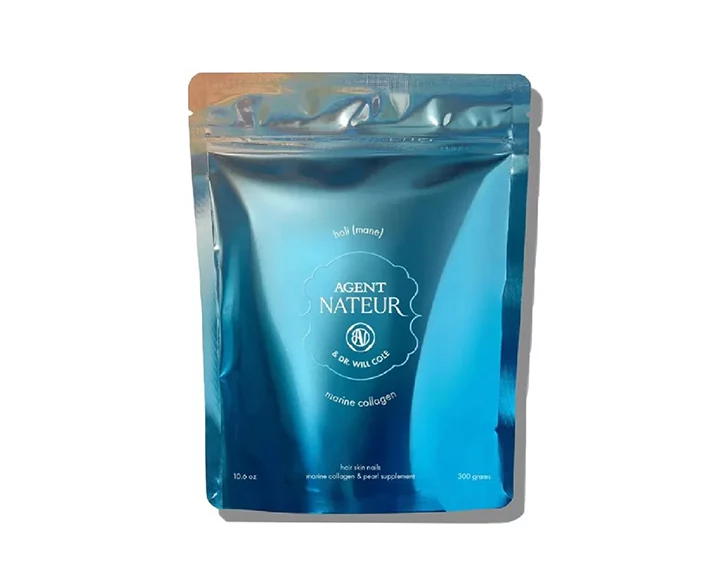Angela O’Brien founded Cleobella as a love letter to travel, craftsmanship, and the kind of beauty that doesn’t compromise people or the planet. Today, her sustainably made, ethically produced fashion brand is also making waves in the wellness world thanks to its commitment to clean, skin-friendly materials like organic cotton, hemp, and linen.
We sat down with Angela to explore how what we wear affects our skin, our hormones, and our overall well-being—and why choosing skin-healthy clothing is one of the most overlooked forms of self-care.
In Conversation with Angela O’Brien
What inspired you to start Cleobella, and how has your vision evolved to prioritize skin health and sustainability in such a meaningful way? Cleobella began as a love letter to travel and craftsmanship. After spending time in Bali, I was deeply moved by the artistry, spirit, and connection to nature woven into daily life. What started as a passion for artisan work quickly grew into a larger purpose—to create a brand that honors people and planet.
Over time, I have been learning and diving deeper into the decisions we can make as a brand and how those decisions can both negatively or positively impact people’s lives and mother nature. We are always researching and consistently improving our business practices to minimize the harm and to be intentional about providing safety in our products.
As I became a mother and my wellness journey deepened, I started looking at everything more holistically—including what we wear. I realized that the fabrics on our skin carry energy and, in many cases, harmful chemicals. So our mission evolved. We committed to using GOTS-certified organic cotton, non-toxic dyes, and slow production methods because I truly believe fashion should support the body, not harm it. It’s about beauty, but also integrity.
 We hear a lot about “clean beauty”—but “clean fashion” isn’t always part of the wellness conversation. Why do you think what we wear deserves more attention in this space? Our skin is our largest organ, and it absorbs much of what we put on it. So if we’re spending time and energy choosing clean skincare, why wouldn’t we do the same with clothing?
We hear a lot about “clean beauty”—but “clean fashion” isn’t always part of the wellness conversation. Why do you think what we wear deserves more attention in this space? Our skin is our largest organ, and it absorbs much of what we put on it. So if we’re spending time and energy choosing clean skincare, why wouldn’t we do the same with clothing?
So many people are unknowingly wrapping themselves in fabrics—like polyester, nylon, and chemically treated blends—that are coated in toxic substances like formaldehyde, flame retardants, phthalates and azo dyes. These chemicals can seep into our pores and disrupt our endocrine system, lead to abnormalities in our cells which can cause cancer, irritate the skin and lungs, and impact overall wellbeing.
I think it’s time we expand the definition of wellness to include our wardrobes. What touches your body daily should be part of your self-care ritual—not something that works against it.
The industry is also not widely regulated enough in terms of chemical usage in both fiber production or manufacturing. It can be difficult for consumers to understand what can be trusted. This is why our team is putting emphasis on discussing these issues and sharing our learnings with our audience. We want to empower people to make better choices that are safer for them, others and our planet.
How do synthetic fabrics like polyester and nylon affect our skin and overall well-being, especially in warm or humid environments? Synthetic fabrics are essentially plastic—and when worn close to the skin, especially in warm or humid climates, they can trap heat and moisture, creating an environment that’s not only uncomfortable but also potentially harmful.
When our skin warms up, our pores open (becomes more permeable) and that’s when chemicals like formaldehyde, BPA, and phthalates (often found in synthetics) can be absorbed more easily. These substances have been linked to hormone disruption, immune issues, and skin irritation like eczema or rashes.
For those with autoimmune sensitivities or young children, the impact can be even more significant. It’s a hidden part of our daily wellness that deserves more attention.
 As a mother, traveler, and founder, how do you personally approach dressing with intention—without sacrificing beauty or function? I need pieces that can move with me—from a creative meeting to the school pickup line to a spontaneous sunset walk. But I also want to feel beautiful and connected to what I’m wearing.
As a mother, traveler, and founder, how do you personally approach dressing with intention—without sacrificing beauty or function? I need pieces that can move with me—from a creative meeting to the school pickup line to a spontaneous sunset walk. But I also want to feel beautiful and connected to what I’m wearing.
For me, that means choosing natural fibers that breathe and feel good on the skin—organic cotton, handwoven linen, and ethically made fabrics that tell a story. I gravitate toward silhouettes that are timeless but effortless, ones I can style differently depending on the moment. It’s not about perfection—it’s about making thoughtful choices that support my lifestyle, health, and the planet.
Cleobella is built on the premise of helping women to feel beautiful and effortless while also celebrating all the roles they can play throughout their day. We acknowledge our bodies are always changing depending on our season/lifestage and I have always approached design to celebrate this, highlighting the beauty of women’s incredible bodies without sacrificing the comfort.
In a world of fast fashion, how do you encourage consumers to shift toward clothing that’s more conscious, skin-safe, and long-lasting? I believe it starts with awareness and education, not shame. Most people want to make better choices—they just need to know where to start.
I always say: begin by reading your clothing labels the way you read food or skincare labels. If something is made with polyester, acrylic, or conventional cotton (which is often heavily sprayed with pesticides), consider swapping it for something made with natural, certified organic materials.
We also try to create pieces that last—through seasons and stages of life. When someone invests in a Cleobella piece, they’re choosing something they’ll want to live in, love in, and pass on. That’s the shift: from disposable to meaningful.
 What’s one piece in the Cleobella collection that you find yourself reaching for time and again—and why? Right now, it’s our hand-printed organic cotton maxi dress. It’s lightweight but has this grounded elegance to it. I’ve worn it barefoot on the beach in Bali, and I’ve dressed it up with boots and a jacket for cooler California evenings.
What’s one piece in the Cleobella collection that you find yourself reaching for time and again—and why? Right now, it’s our hand-printed organic cotton maxi dress. It’s lightweight but has this grounded elegance to it. I’ve worn it barefoot on the beach in Bali, and I’ve dressed it up with boots and a jacket for cooler California evenings.
It’s breathable, versatile, and feels like second skin; no synthetic fibers, no weird chemical smell—just pure, intentional beauty. That’s the kind of piece I want more of in my life.
If someone wanted to take one small but impactful step toward a more skin- and earth-friendly wardrobe, where would you suggest they start? Start with what touches your skin the most—your sleepwear, your underwear, your basics. Swap out one synthetic item for something in organic cotton or linen or bamboo.
Then, care for your clothes the same way you care for your body: wash them less often, skip the synthetic detergents and dryer sheets, and let them air dry when you can.
It doesn’t have to be a full lifestyle overhaul overnight. One thoughtful choice at a time is more than enough. And the more you feel the difference, the more you’ll want to keep going.














